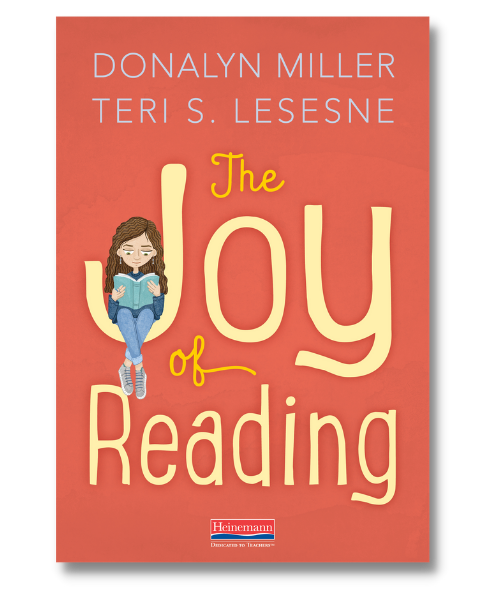
Because the ability to choose what to read is essential to reading joy (and, ultimately, to greater success in reading), we must teach students how to self-select books, and we must do so without attempting to control their choices. We know that sharing our enthusiasm for reading positively influences students’ interest in reading (Nathanson, Pruslow, and Levitt 2008), but we cannot allow our reading preferences and biases to limit students’ agency. It’s a balance between too much control and not enough support.
Initially, we can provide students with some idea of the books from which they can make choices. With abundant and varied book access and encouragement to choose what they read, students can read widely—a predictor of reading proficiency. Beyond higher scores on reading tests, when students have the ability to browse, sample, and read a variety of books, they are more likely to find books they like (Miller and Kelley 2013). Offering reading choices requires increasing our book knowledge, learning about our students’ interests, and modeling and teaching students how to locate and select book.
Interest Surveys: Getting to Know Students
Starting off the school year with an interest survey can help you collect information about reading interests and preferences, but—most importantly—a thoughtful survey also provides insight into our students as people. Follow-up surveys can help us see how students’ interests and preferences change and develop over time. The more we know about the young readers in our care, the more likely we are to be able to help them choose books that will bring them joy.
A quick online search for “reading surveys” will return a plethora of ready-to-use surveys. Nancie Atwell’s In the Middle (2015), Teri’s Making the Match (2003), and Donalyn and Susan Kelley’s Reading in the Wild (2013) also include examples of helpful reading surveys. It’s important to note that these are, truly, examples: we would never take a student survey from a website, book, or other resource and use it as is because it would never be a perfect fit for the particular group of children in our classroom. We suggest looking at several models, considering what seems most helpful about each, and creating one of your own that is responsive to your students.
Consider what you hope to learn as well as what the experience of taking the survey will be for each student: while we might want to ask twenty open-ended questions, a survey of that length might fatigue students and ultimately result in less information than a shorter, targeted survey. What can we teachers and librarians learn about students’ personal lives and passions that will inform our efforts to engage them with reading? Does the student have responsibilities outside of school that might encroach on home reading time? What are their hobbies and interests? And, of course, avoid questions that might trigger trauma—in relation to students’ life experiences or in relation to their reading lives. When adults ask a disengaged seventh grader to list their favorite books, and they don’t have any, we set that kid up for reading failure from the beginning.
Here are a few questions that we have found helpful:
- What is the best book you ever read? The book that students name here can help you make further recommendations, perhaps as the first rung on a reading ladder—“a set of books that are related in some way (e.g., thematically) and that demonstrate a slow, gradual development from simple to more complex” (Lesesne 2010, 48). If students answer that they’ve never read a good book, it may be a sign that they are dormant readers—readers who are too busy right now to read or who haven’t found a good book in a while.
- When and where do you like to read? Students’ responses to this question can help you get to know them better as readers and can make you aware of any potential obstacles to reading outside of school.
- What are your interests and hobbies? Often, the answers to this question can help us connect readers to books and consider how we may need to grow our classroom or school library collections. Is this the year of soccer mania? Is Animal Crossing still popular?
- What are your responsibilities after school? This question gets at several pieces of information, including what our students might be expected to do to help out at home. Do they take care of younger siblings? Start dinner?
- What could I ask my students to learn more about them than what is in their school records? Inviting students to share what they wish teachers knew about them can give us a glimpse of what students value and let us know what aspects of their identity they think aren’t seen at school.
• • •
Adapted from The Joy of Reading. To learn more, visit Heinemann.com.


